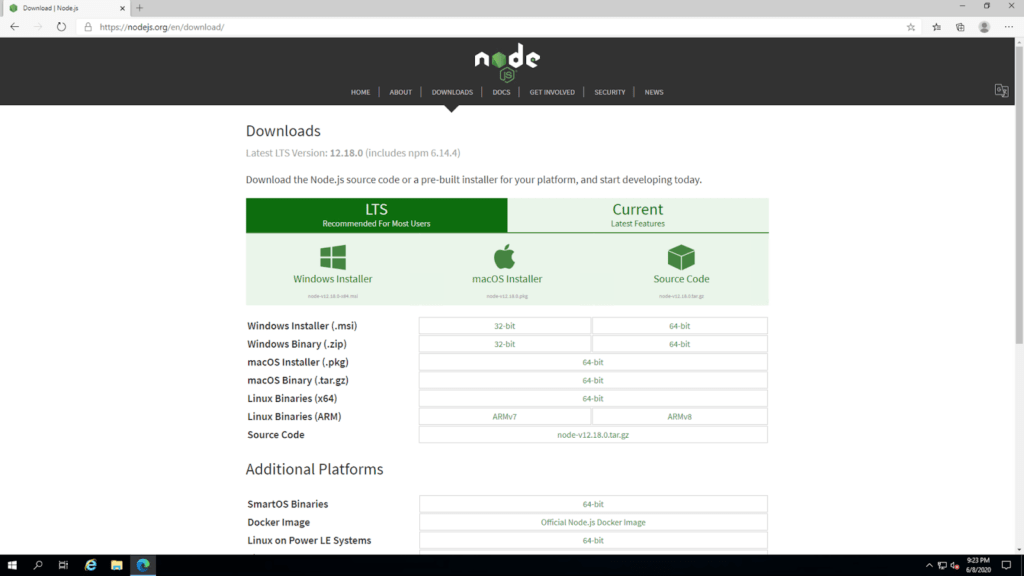

As shown in the previous image, we plan to download and install the 64-bit version of Node.js for Windows. The npm version that will be installed is the same in both of the above cases. To do this, you need to enter the download link of Node.js from its official site and select the version related to your operating system and download it. The first step in getting started with Node is to install it on your system. For example, using the MongoDB module, you can connect to the MongoDB database and manage the information you want. Other companies and developers also created modules and shared them with others, which you can install and use using npm. Node.js contains a large number of modules, such as fs or path or HTTP modules. When you install node.js, npm ( node package manager) is also installed in the background, which you can use to manage packages and modules related to your project or the whole system. Once the Node.js installation is complete, you can start your projects using it. Node.js can be installed on various operating systems such as Windows, Ubuntu, OSX, etc. To start programming with Node.js, you must first install it on your system. Recommended Article: How to install LEMP on CentOS 8 Introduction to Node.js


 0 kommentar(er)
0 kommentar(er)
